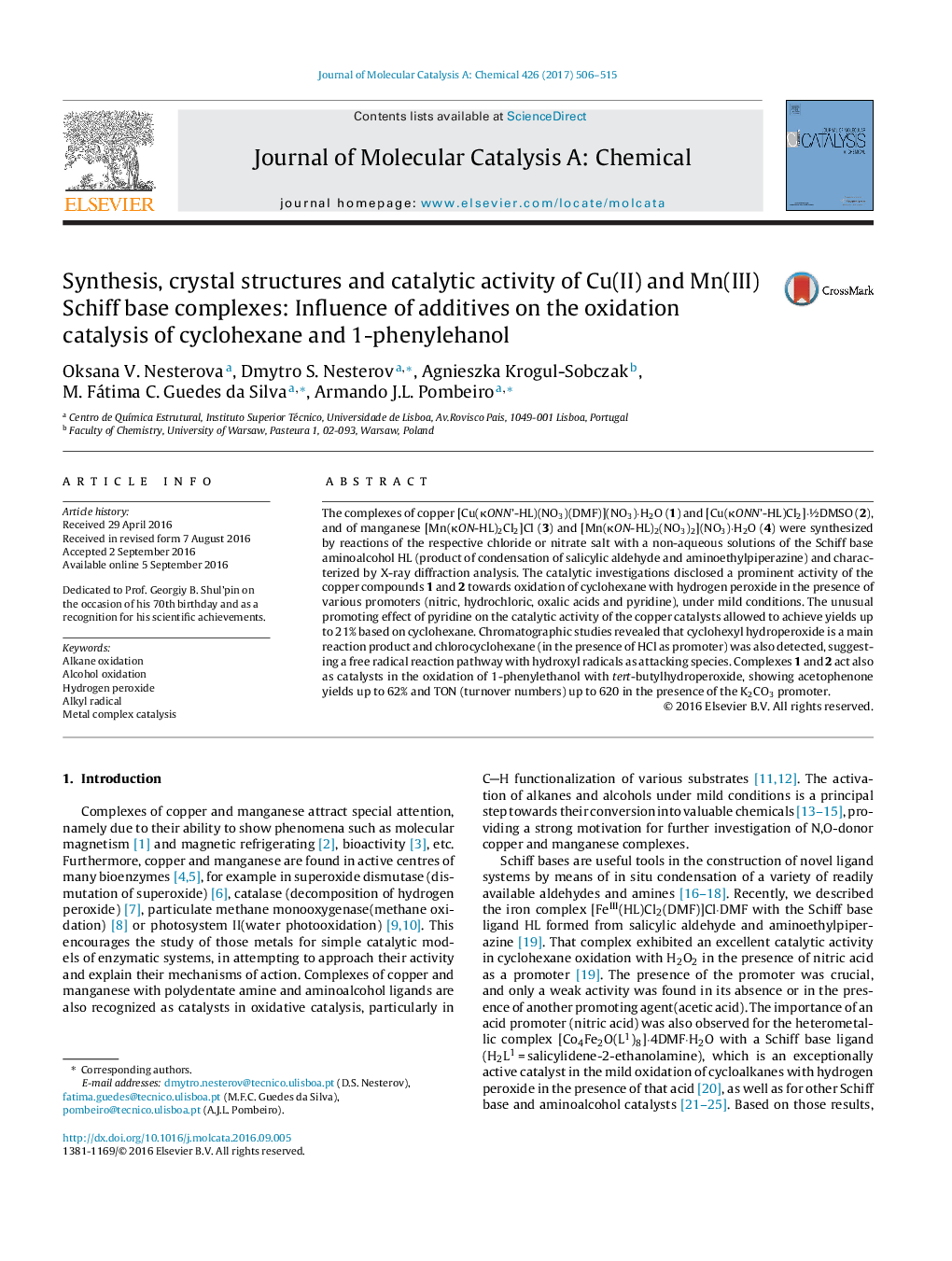| Article ID | Journal | Published Year | Pages | File Type |
|---|---|---|---|---|
| 6456467 | Journal of Molecular Catalysis A: Chemical | 2017 | 10 Pages |
•Oxidation of cyclohexane with H2O2 catalysed by copper and manganese complexes.•Pronounced promoting effect of pyridine.•Direct GCMS observation of cyclohexyl hydroperoxide as a main reaction product.•The formation of chlorocyclohexane in the presence of HCl promoter.•Solvent-free oxidation of phenylethanol with t-BuOOH.
The complexes of copper [Cu(κONN’-HL)(NO3)(DMF)](NO3)∙H2O (1) and [Cu(κONN’-HL)Cl2]∙½DMSO (2), and of manganese [Mn(κON-HL)2Cl2]Cl (3) and [Mn(κON-HL)2(NO3)2](NO3)∙H2O (4) were synthesized by reactions of the respective chloride or nitrate salt with a non-aqueous solutions of the Schiff base aminoalcohol HL (product of condensation of salicylic aldehyde and aminoethylpiperazine) and characterized by X-ray diffraction analysis. The catalytic investigations disclosed a prominent activity of the copper compounds 1 and 2 towards oxidation of cyclohexane with hydrogen peroxide in the presence of various promoters (nitric, hydrochloric, oxalic acids and pyridine), under mild conditions. The unusual promoting effect of pyridine on the catalytic activity of the copper catalysts allowed to achieve yields up to 21% based on cyclohexane. Chromatographic studies revealed that cyclohexyl hydroperoxide is a main reaction product and chlorocyclohexane (in the presence of HCl as promoter) was also detected, suggesting a free radical reaction pathway with hydroxyl radicals as attacking species. Complexes 1 and 2 act also as catalysts in the oxidation of 1-phenylethanol with tert-butylhydroperoxide, showing acetophenone yields up to 62% and TON (turnover numbers) up to 620 in the presence of the K2CO3 promoter.
Graphical abstractFigure optionsDownload full-size imageDownload high-quality image (103 K)Download as PowerPoint slide
